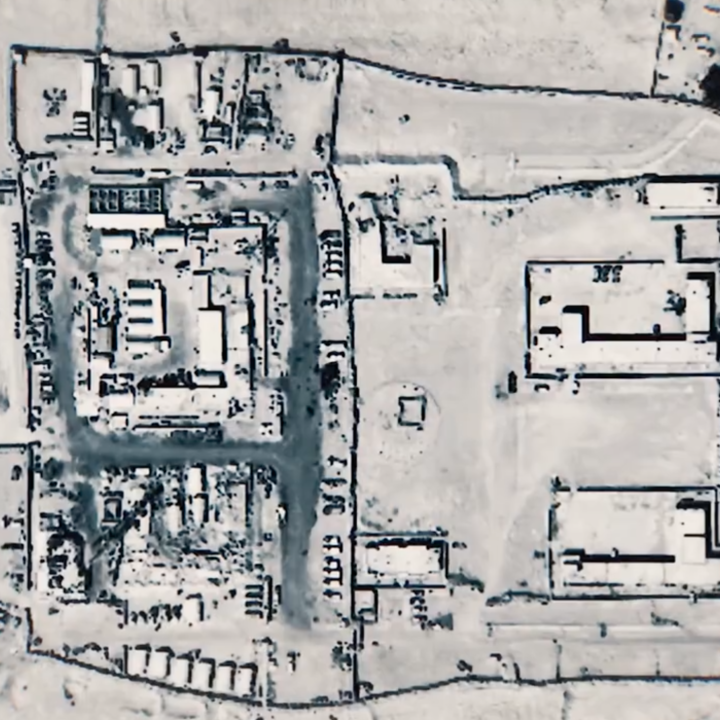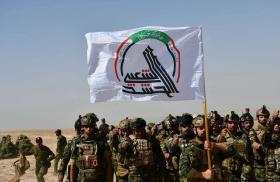
Militia Propaganda Around the Attack on al-Tanf

Iraqi militia actors appear to have had forewarning of the attack, reflecting an increasing focus on anti-coalition operations in Syria.
On October 20, multiple projectiles struck al-Tanf base in Syria, a point of presence for coalition advisors to local forces fighting the Islamic State. Although no injuries were sustained, the attack was unusually heavy—seemingly a mix of drone and rocket systems, with as many as five munitions used. The coalition confirmed that the attack involved “a UAS [i.e., drone] attack coupled with IDF," referring to indirect fire using rockets.
Claim from Facade Group
From around 22:46 hours Syria/Iraq time on October 20, Iraqi muqawama (resistance) media channels became aware of the attack, covering the news as it unfolded. They quickly (and correctly) claimed five projectiles were used and that the attack was undertaken from both Iraq and Syria. Militia accounts also linked the attack to a week-old statement by a group called “the Allies of Syria Operations Room,” which was issued in direct response to airstrikes conducted around Palmyra, Syria, on October 13. "The Allies of Syria Operations Room" was formed in 2015 and includes all the muqawama militias operating in Syria including the Lebanese Hezbollah (LH). The group is led by the IRGC-Qods force. LH also plays an important role in leading the 'Operations Room".
Shortly after the Palmyra strikes, militia channels began claiming that Israeli warplanes had used U.S.-controlled airspace over al-Tanf to infiltrate Syria. Militia media interest in al-Tanf base rose significantly from October 14, when the “Allies of Syria” group emerged to threaten retaliation.
In its statement, the group claimed it had "taken a decision to respond harshly to the aggression against Palmyra." The statement went on: "Our mission and legitimate presence in Syria has always been to help the Syrian state. We work under the auspices of the [Syrian] state to confront the terrorists and the takfiri (apostate) project led by the Islamic State. For years, we have been subjected to attacks from the Israeli-American enemy, and these attacks were an attempt to drag us into side battles that were not among the priorities of our presence in Syria.”
Such rhetoric is significant as a clear statement of intent for the attack on al-Tanf six days later. It is also notable for implying that the group is not of Syrian origin (e.g., “our legitimate presence in Syria...under the auspices of the state”).
Attributing the Attack to Iraqi Militias
We assess an Iraqi muqawama role in the attack on al-Tanf, possibly supported by Iran's Islamic Revolutionary Guard Corps. This assessment is based on several factors:
Modus operandi. To date, the use of Iranian-designed suicide drones by foreign militias has been confined to certain trusted Iraqi militias such as Kataib Hezbollah (KH). The relatively complex al-Tanf attack, which combined one-way drones with rockets, strongly suggests either a muqawama role (e.g., KH) or direct Iranian involvement.
Information operations. Iraqi muqawama media channels closely followed the events and quickly disseminated information about the attack. They appeared to have access to insider information such as rough launch locations and number of weapons used.
Prior statement. The “Allies of Syria" statement on October 14 implies that the group did not originate in Syria, raising the likelihood that the perpetrators of the subsequent attack were Iraqi.
Increased Iraqi militia aggression in Syria. Iraqi muqawama have been experimenting with kinetic attacks on U.S. points of presence in Syria instead of Iraq. As Militia Spotlight noted in a July article, rocket attacks have been reported against U.S. bases near Hasaka and oil fields in the vicinity of Deir al-Zour. Yet very few muqawama accounts have referenced al-Tanf until now, and even fewer previous militia attacks against U.S. bases in Syria involved drones.
Location. The U.S. garrison at al-Tanf and the surrounding deconfliction zone are located on the strategic M2 highway between Damascus and Baghdad. The base is approximately 120 km from the muqawama-controlled town of Akashat and the operating area of KH's Jazira Operations Command, which is known to control Iranian-designed drone systems. Militias also control numerous unofficial border crossing points in the area. According to militia media reports, the munitions used in the October 20 attack originated from sites on both sides of the border.
Conclusions
Collectively, this evidence suggests a strong possibility that the attack on al-Tanf was carried out by Iranian-backed militias from the Iraqi muqawama. The immediate catalyst for the attack may have been last week's airstrikes on Palmyra, but the militias and Iran also have a broader strategic interest in seeing the U.S. garrison on the Baghdad-Damascus highway removed. This interest, combined with the growing number of attacks on U.S. sites elsewhere in Syria, means that further attacks are a serious possibility. The attackers' apparent success in bypassing the no-fly zone around the garrison also raises concerns about developing militia technology and tactics.
Militia Spotlight also noted the continuation of attacks on U.S. bases in Syria even after July 29, when Iran issued guidance asking the muqawama to cease attacks in Iraq until after that country's October election. Syria is fast becoming the least politically costly location in which the muqawama can hit U.S. points of presence—or be hit by foreign forces.






